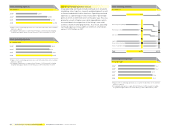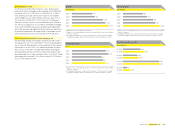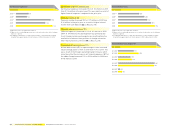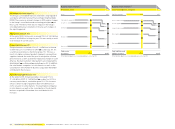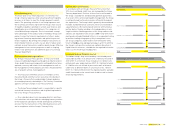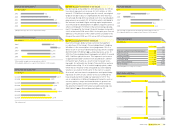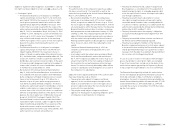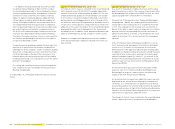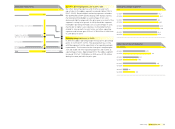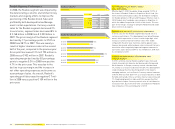Reebok 2008 Annual Report Download - page 97
Download and view the complete annual report
Please find page 97 of the 2008 Reebok annual report below. You can navigate through the pages in the report by either clicking on the pages listed below, or by using the keyword search tool below to find specific information within the annual report.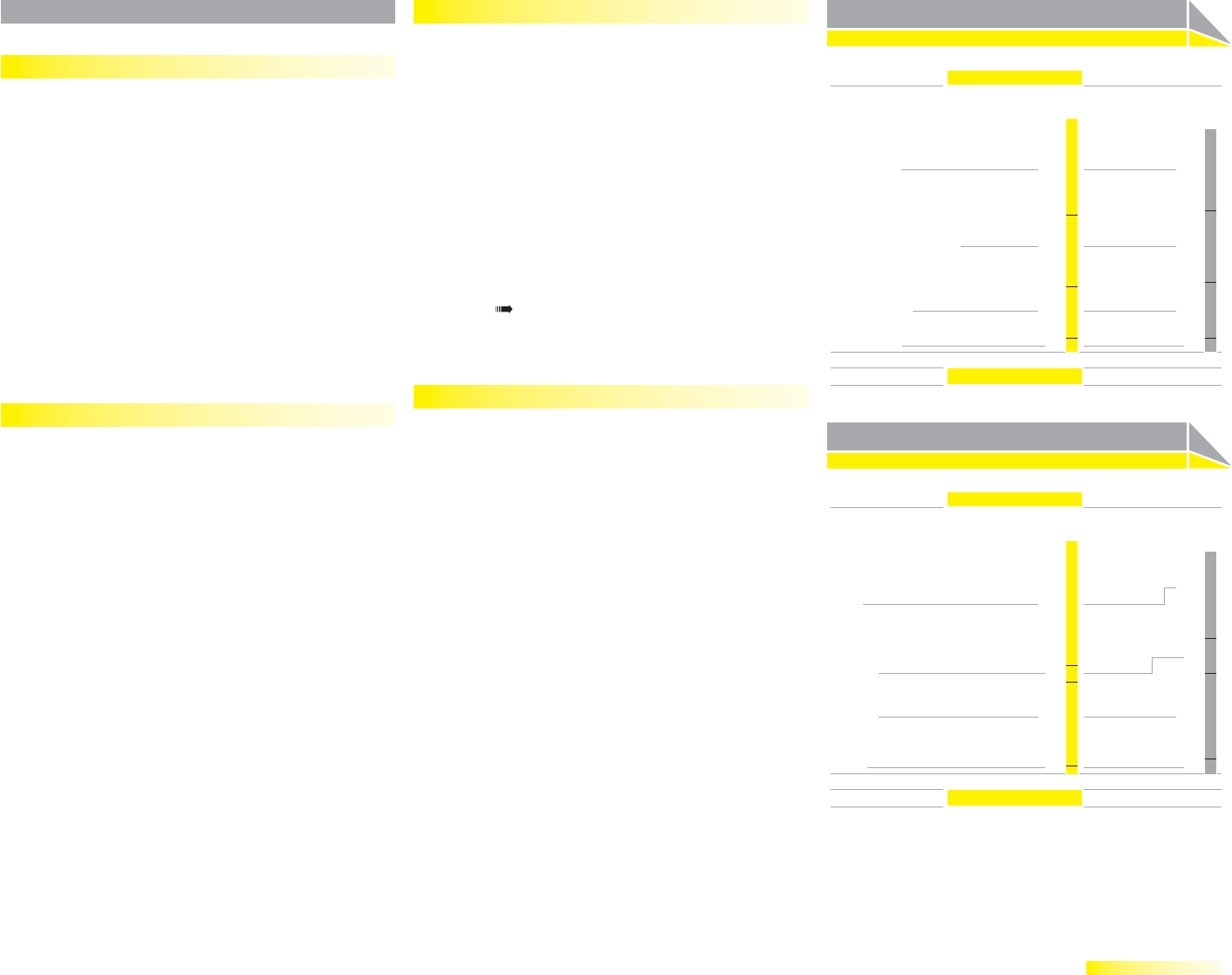
adidas Group Annual Report 2008 093
Total credit facilities
€ in millions
2008 2007
Total 6,547 6,262
Remaining time to maturity of available facilities
€ in millions
2008 2007
Total 6,547 6,262
Convertible bond 393
Private placements 1,432
Medium-term committed lines 2,000
Short-term lines 2,722
> 5 years 234
3 to 5 years 2,332
1 to 3 years 462
< 1 year 3,519
384
1,564
2,000
2,314
419
2,376
967
2,500
Treasury
Group fi nancing policy
The major goal of our fi nancing policy is to minimise the
Group’s fi nancial expenses while ensuring suffi cient liquidity
reserves at all times to meet the Group’s payment commit-
ments. The operating activities of our Group segments and
the resulting cash infl ows represent the Group’s main source
of liquidity. Liquidity is planned on a multi-year fi nancial and
liquidity plan on a rolling monthly basis. This comprises all
consolidated Group companies. Our in-house bank concept
takes advantage of the surplus funds of individual Group com-
panies to cover the fi nancial requirements of others, reduc-
ing external fi nancing requirements and optimising our net
interest expenses. By settling intercompany transactions via
intercompany fi nancial accounts, we are able to reduce exter-
nal bank account transactions and thus bank charges. Effective
management of our currency exposure as well as ongoing
interest rate optimisation are additional goals of our Group
Treasury department.
Treasury system and responsibilities
Our Group’s Treasury Policy governs all treasury-related
issues, including banking policy and approval of bank relation-
ships, global fi nancing arrangements and liquidity /asset man-
agement, currency and interest risk management as well as
the management of intercompany cash fl ows. Responsibilities
are arranged in a three-tiered approach:
—
The Treasury Committee consists of members of the
Executive Board and other senior executives who decide on
the Group’s Treasury Policy and provide strategic guidance
for managing treasury-related topics. The Treasury Committee
approves all major changes to our Treasury Policy.
—
The Group Treasury department is responsible for specifi c
centralised treasury transactions and for global implementa-
tion of our Group’s Treasury Policy.
—
On a subsidiary level, local managing directors and fi nan-
cial controllers are responsible for managing treasury matters
in the respective subsidiaries. Brand and regional controlling
ensures that the transactions of the individual business units
are in compliance with the Group’s Treasury Policy.
Centralised treasury function
In accordance with our Group’s Treasury Policy, more than
90% of our worldwide credit lines are managed by the Group
Treasury department. Portions of those lines are allocated to
the Group’s subsidiaries and backed by parental guarantees.
As a result of this centralised liquidity management, the Group
is well positioned to allocate resources effi ciently throughout
the organisation. The Group’s debt is generally unsecured and
includes standard fi nancial covenants, which are reviewed on
a quarterly basis. We maintain good relations with numerous
partner banks, thereby avoiding a strong dependency on any
single institution. Banking partners of the Group and our sub-
sidiaries are required to have at least a BBB+ long-term invest-
ment grade rating by Standard & Poor’s or an equivalent rating
by another leading rating agency. Only in exceptional cases
are Group companies authorised to work with banks with a
lower rating see Risk and Opportunity Report, p. 107. To optimise
the Group’s cash position and ensure optimal allocation of
liquid fi nancial resources, subsidiaries are required to transfer
excess cash to the Group’s headquarters.
Long-term fi nancial fl exibility ensured
The adidas Group’s long-term fl exibility is ensured by unuti-
lised credit facilities in an amount of € 3.9 billion at the end of
2008 (2007: € 4.1 billion). These include a € 2.0 billion com-
mitted multi-year syndicated loan (2007: € 2.0 billion) of which
€ 1.8 billion was not utilised at year-end as well as bilateral
credit lines at different banks in an amount of € 2.1 billion
(2007: € 2.1 billion). We monitor the ongoing need for available
credit lines based on the current level of debt as well as future
fi nancing requirements.





